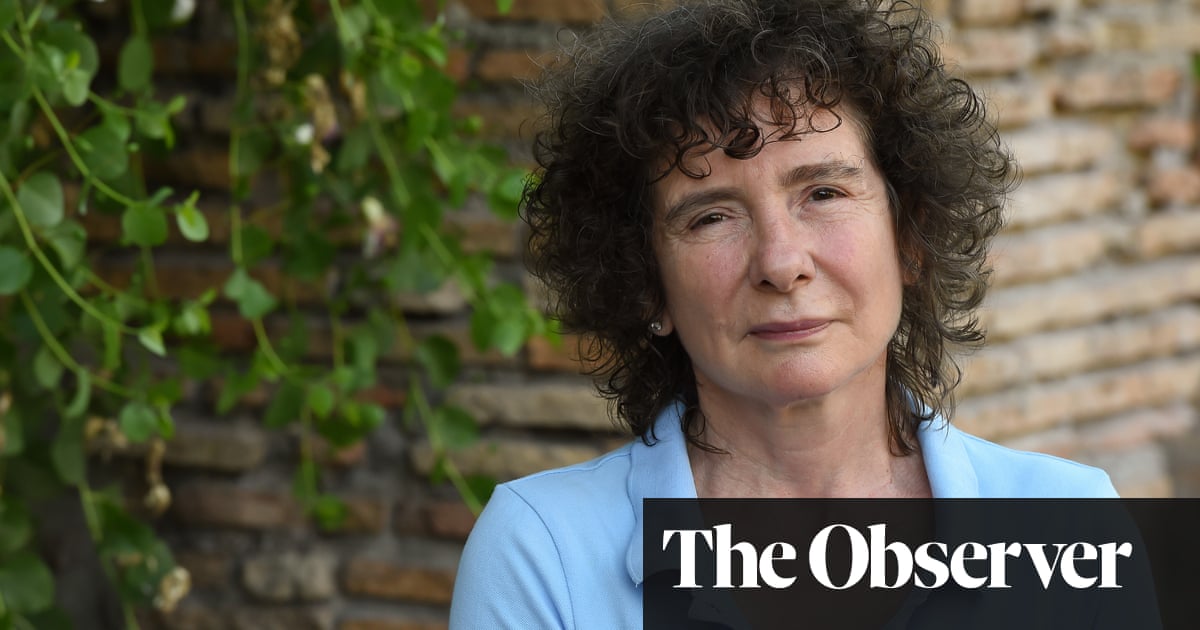
Aman walks into a bar. Well, no. At the beginning of poet Joelle Taylor’s first novel, a woman called Jones walks into a tattoo parlour. It’s 2233 and weather programmers have calibrated this part of London to “endless spring”. The already heavily tattooed Jones asks the two artists, Small and Cass, to connect all the images on her body by a thin line, using ink mixed with a vial of her mother’s blood. This will be an act of unification and completion.
The 23rd-century tattoo parlour is a retro one. The tattooists may use holographic laptops to book a sky cab, but their workplace is designed to be mid-1990s, right down to its soundtrack, a hard house CD. Setting 1996 on an endless loop in 2233 is a deft introduction of coexisting time periods, a central idea of the novel and one responsible for a thread of dizzying and delightful inversions, reversals and paradoxes. At the start, we’re in the future, but Jones says she is “back”. Cass and Small are ostensibly strangers to her, yet Jones is aware of aspects of their lives still to come – and their pasts. She knows how Small “got the scuff marks on the underside of her boots”. Even the sun is in on the act. It’s a “baby’s head retreating into the womb”.
Jones, like her mother and grandmother, has the ability to experience other people’s lives in an intensely vivid manner, “falling” into them across space and time; each of her tattoos denotes one of these “rememberings”. Jones’s body is an analogy for the novel itself. Each tattoo is a portal to a story and each story is connected by the thread of the tattooists’ talk, as they etch the thin, unifying line. Repression and women’s resistance, control and community, violence and justice: each story reconfigures and recontextualises these elements in a different way. There are mothers and daughters, past and present, in a compelling mise en abyme of womanhood.
More than anything, this is a novel about the power and importance of stories
It’s hard to think of many books more relentlessly inventive. The novel contains a phantasmagoric narrative of female vanishings and erasure. There’s an origin story, told with mythic clarity, about three furies who seek justice on behalf of wronged women. A tale about the commodification of family relationships involves a painful grafted identity. We enter the ugly psyche of an involuntarily celibate, violent misogynist, and in another story, that of a resourceful, vibrant 13-year-old girl, killed in a Lancashire pit explosion in 1911. There’s the apocalyptic satire of an England ruled by the Quiet Men, with their “Grande Toddler King” who vows to make the country great again, and there’s a chilling story of ectogenetic process and male control. We also encounter the Gutter Girls, a group of “prostitutes, drug users and poverty surfers” on a north London estate who become a vital movement of resistance against male violence.
Another of Jones’s stories of camaraderie and underground community is located in a lesbian bar, the Maryville. Here a man, three in fact, “white boys with grey mouths”, do walk into a bar – and are ejected. The Maryville and its “blood butches”, Angel, Valentine, Dudzile and Jack Catch, featured in C+nto & Othered Poems, Taylor’s most recent collection of poetry, which won the TS Eliot and the Polari prizes. It should be no surprise, then, that Taylor’s language is so arresting, and feels so newly minted. It can be incantatory, dazzling, brutal. There’s exquisitely apt pathetic fallacy – “the rain inseminated what soil it could find” – and casual reworking of idiom: “Mother kept the skin of her teeth in the top drawer of her dressing table. She’d hung on to it for years.” In a story about trafficked girls, the punters are elliptically presented as mosquitoes: parasitic, vampiric, diminutive.
More than anything, this is a novel about the power and importance of stories. How Cass and Small connect to them is significant, but equally important is how we as readers respond. (We might ask why, as Jones falls into existences across space and time, she never encounters a bunch of benign or unobjectionable men, but that’s not the novel’s point or schema.) Like water, Jones says, stories can get in anywhere. They’re rich and fattening. A story is an infinity: inside every story is another. When Small and Cass are unsettled by a tale about discarded girls, Jones observes that certain subjects are “precincts of avoidance, soft ground on which it is inadvisable to walk. We know these areas by the way our bodies twist around them. We know these stories by the way we never tell them.” But Taylor shows no such reticence or fear.
Wendy Erskine’s Dance Move is published by Picador. The Night Alphabet by Joelle Taylor is published by Riverrun in the UK (£18.99) and Australia ($34.99). To support the Guardian and the Observer buy a copy at guardianbookshop.com. Delivery charges may apply.












